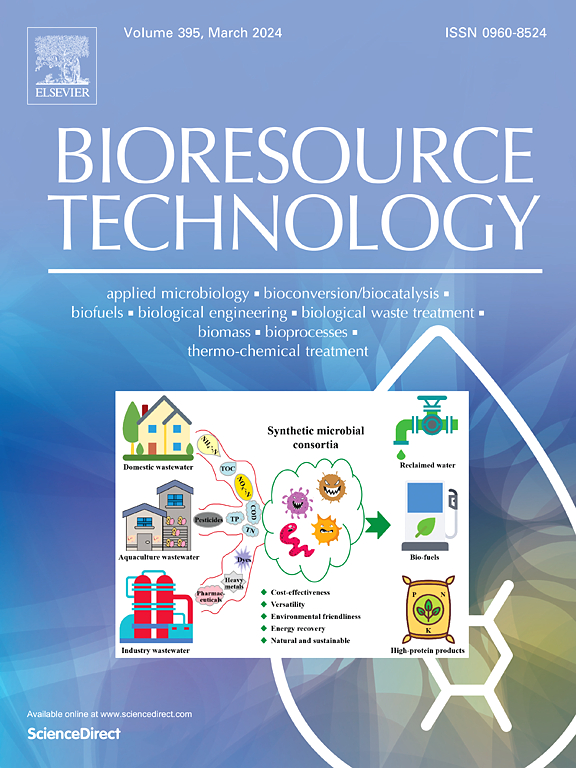Treatment of simulated dairy wastewater using artificial amoeba- based enzyme carriers for enhanced degradation of complex organic compounds
IF 9
1区 环境科学与生态学
Q1 AGRICULTURAL ENGINEERING
引用次数: 0
Abstract
Conventional methods for treating food industry wastewater are often constrained by low resource recovery and high operational costs. This study introduces an innovative artificial amoeba (AA)-based enzyme carrier designed to enhance the efficiency of dairy wastewater treatment by improving enzyme stability and activity, while simultaneously promoting the resource utilization potential of microalgae. The AA was fabricated via electroformation, encapsulating an agarose-glycerol gel and protease within liposomes to mimic the protective mechanism of natural amoebae. Enzymatic conditions were optimized to evaluate the hydrolytic efficiency on complex organic substrates. Notably, the enzymatic pretreatment of dairy wastewater markedly stimulated the growth of Chlorella vulgaris, achieving a biomass concentration of 1.36 g/L approximately ninefold higher than that obtained with untreated wastewater. This study not only presents a novel strategy for the effective treatment of dairy effluents but also offers a promising pathway for sustainable resource valorization through microalgal biotechnology for the production of high-value bio-based products.

以人工阿米巴为基础的酶载体处理模拟乳制品废水,以增强对复杂有机化合物的降解。
传统的食品工业废水处理方法往往受到低资源回收率和高操作成本的限制。本研究介绍了一种新型的人工阿米巴(AA)酶载体,旨在通过提高酶的稳定性和活性来提高奶牛废水处理效率,同时提高微藻的资源利用潜力。通过电法制备AA,将琼脂糖-甘油凝胶和蛋白酶包埋在脂质体内,模拟天然变形虫的保护机制。优化酶解条件,评价其在复杂有机底物上的水解效率。值得注意的是,乳废水的酶处理显著刺激了小球藻的生长,其生物量浓度为1.36 g/L,约为未经处理废水的9倍。本研究不仅提出了一种有效处理乳制品废水的新策略,而且为利用微藻生物技术生产高价值生物基产品的可持续资源增值提供了一条有希望的途径。
本文章由计算机程序翻译,如有差异,请以英文原文为准。
求助全文
约1分钟内获得全文
求助全文
来源期刊

Bioresource Technology
工程技术-能源与燃料
CiteScore
20.80
自引率
19.30%
发文量
2013
审稿时长
12 days
期刊介绍:
Bioresource Technology publishes original articles, review articles, case studies, and short communications covering the fundamentals, applications, and management of bioresource technology. The journal seeks to advance and disseminate knowledge across various areas related to biomass, biological waste treatment, bioenergy, biotransformations, bioresource systems analysis, and associated conversion or production technologies.
Topics include:
• Biofuels: liquid and gaseous biofuels production, modeling and economics
• Bioprocesses and bioproducts: biocatalysis and fermentations
• Biomass and feedstocks utilization: bioconversion of agro-industrial residues
• Environmental protection: biological waste treatment
• Thermochemical conversion of biomass: combustion, pyrolysis, gasification, catalysis.
 求助内容:
求助内容: 应助结果提醒方式:
应助结果提醒方式:


